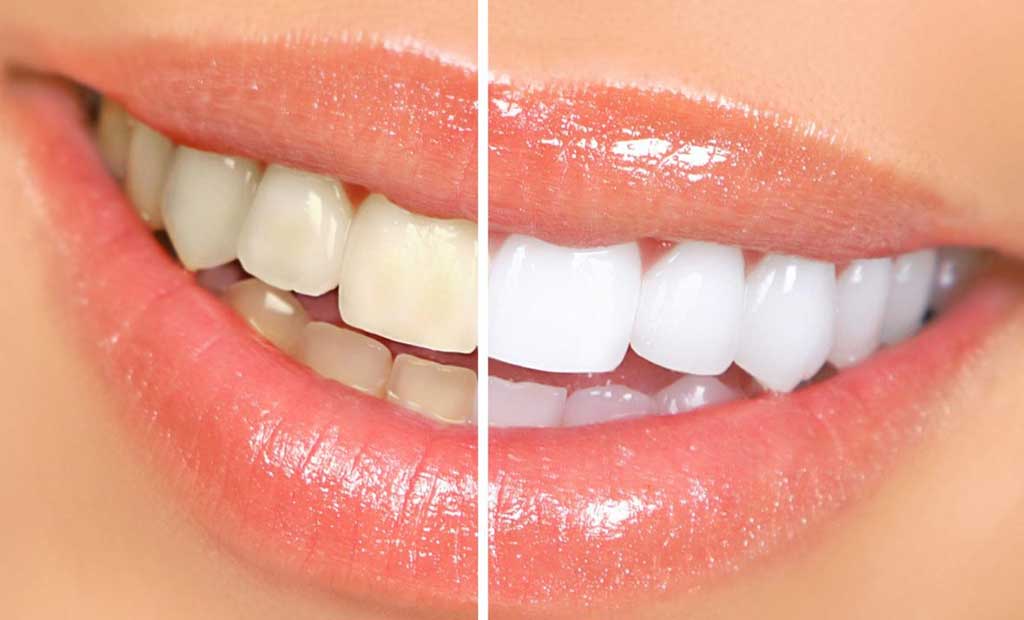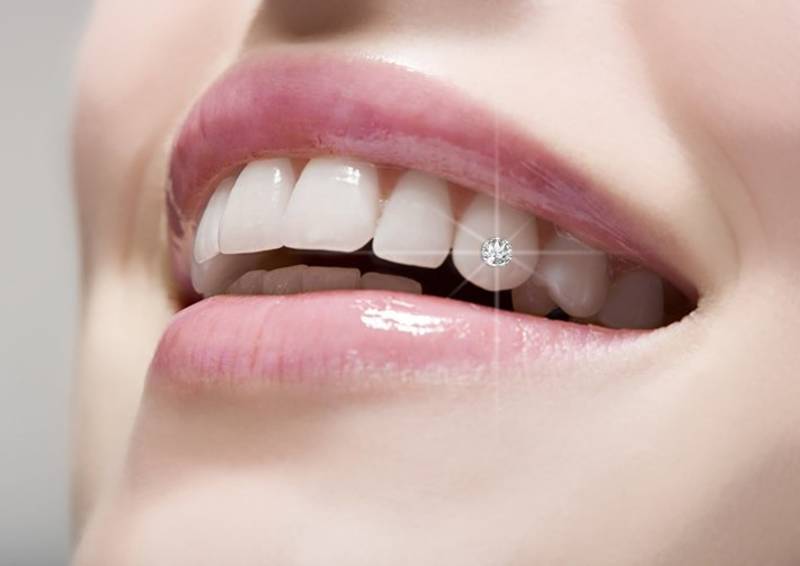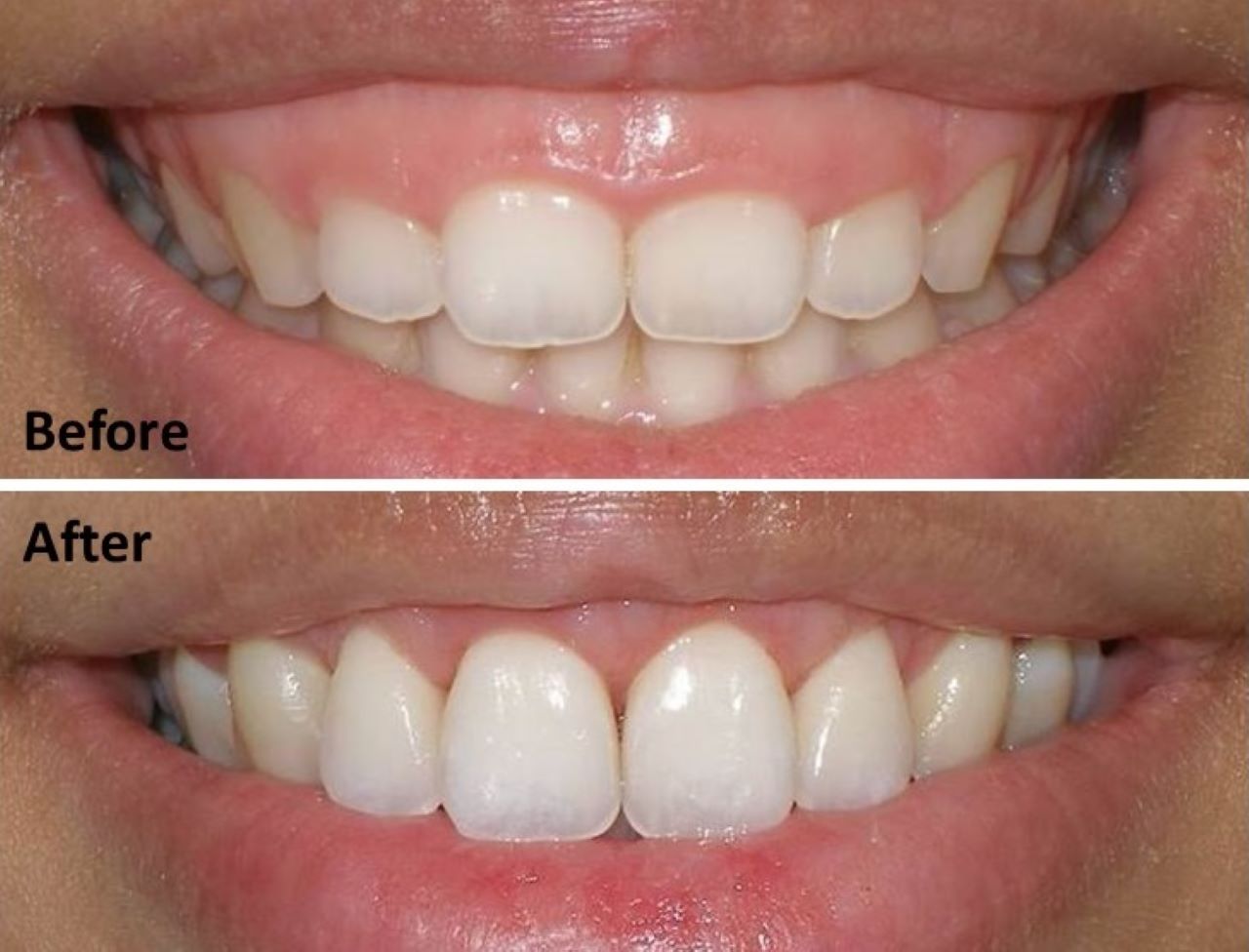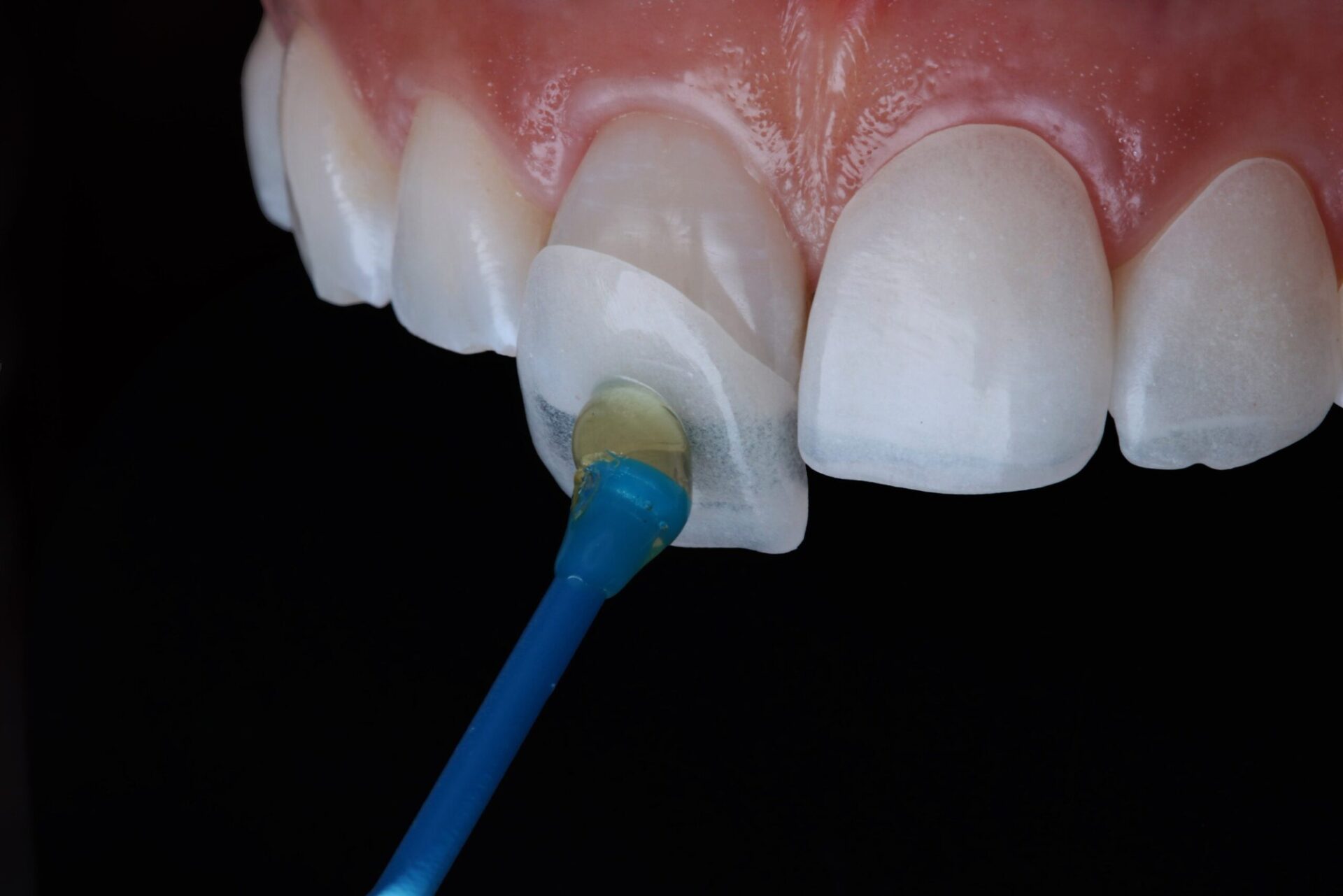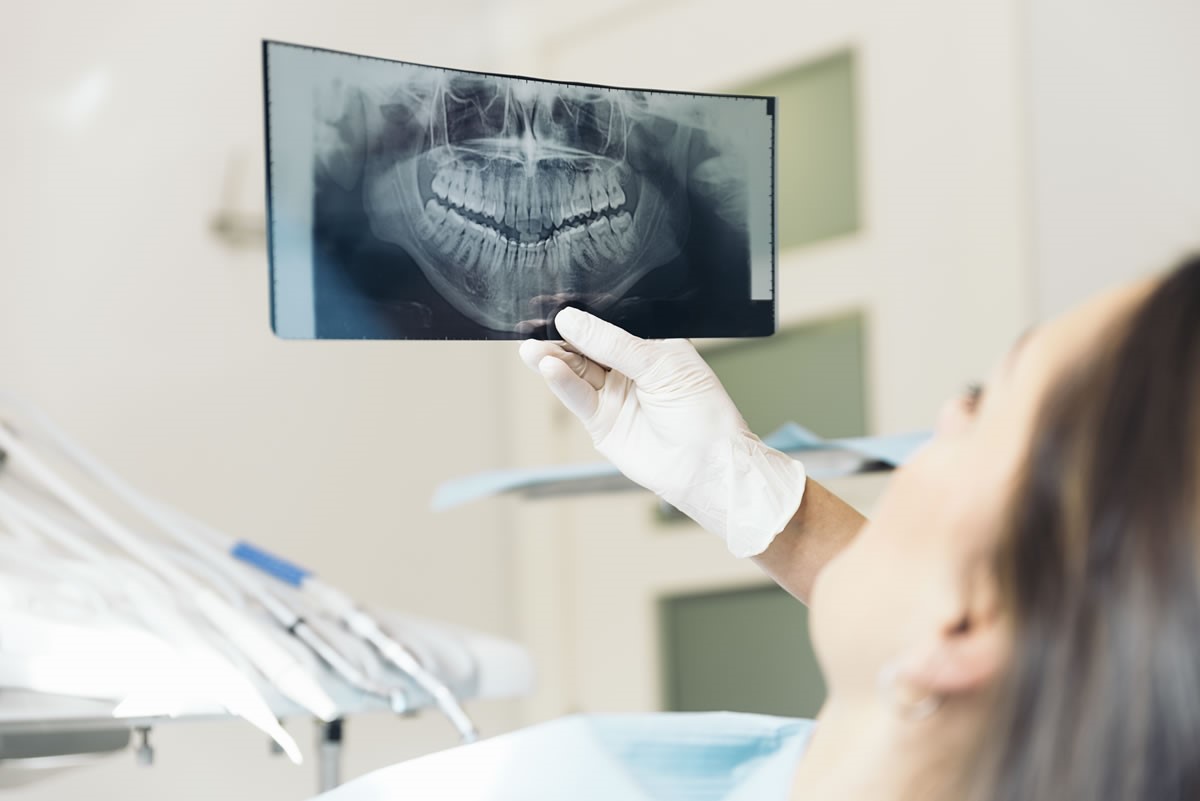Porcelain crowns are a method for restoring damaged teeth and improving their shape and color, widely chosen by patients. In this article, Amanda Dental Clinic will provide you with detailed information on the procedure, its advantages/disadvantages, and the cost of porcelain crowns.
What is a porcelain crown?
Porcelain crowns are a cosmetic dental restoration technique in which the dentist removes part of the natural tooth to shape a tooth core, then places a porcelain crown over it. This crown mimics the shape, size, and color of natural teeth, enhancing both aesthetics and chewing function.
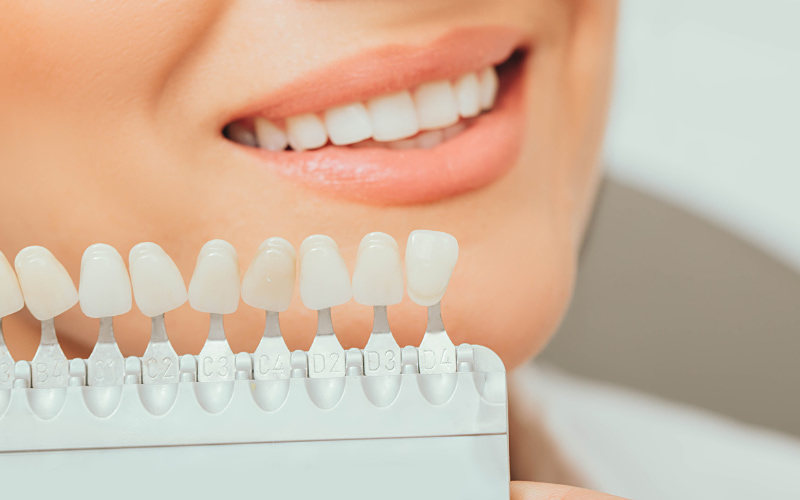
When is cosmetic porcelain crowning recommended?
In reality, not everyone is suitable for cosmetic porcelain crowns. Dentists will carefully assess the condition of the teeth and the degree of jaw misalignment before advising on the most appropriate treatment. Common cases recommended for porcelain crowns include:
- Teeth that are severely discolored or stained due to tetracycline or fluoride and do not respond to whitening treatments.
- Crooked, misaligned, or gapped teeth.
- Teeth that are fractured, broken, or significantly chipped.
- Teeth with severe decay, pulpitis, or necrotic pulp.
- Mild cases of overbite or underbite.
- Teeth that are spaced or too short in length.
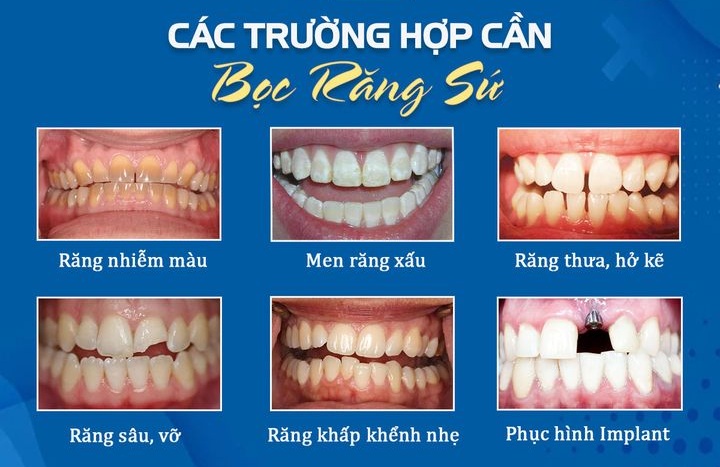
What are the benefits of porcelain crowns?
Porcelain crowns are a widely used and popular cosmetic dental solution thanks to the following advantages:
High aesthetics: Full-ceramic crowns offer exceptional aesthetic results, effectively resolving issues related to tooth shape and color such as cracks, chips, deformities, or severe staining. This is especially ideal for teeth discolored due to tetracycline antibiotics.
Stain-resistant quality: High-quality porcelain crowns are coated with anti-stain layers, preventing yellowing or dullness caused by food or time. This is a major advantage over fillings, which are prone to discoloration and loss of natural appearance.
Durability: To ensure long-lasting beauty of full-ceramic crowns, patients should avoid excessive biting force and refrain from chewing hard objects. Proper care helps the crown stay strong and stable in the dental arch, especially with premium options like E.Max or HT Smile.
Fixed in the dental arch: Unlike removable dentures (which may slip) or fillings (which may fall out), porcelain crowns are securely attached to the natural tooth post, an implant abutment, or via a bridge, offering reliable strength and stability.
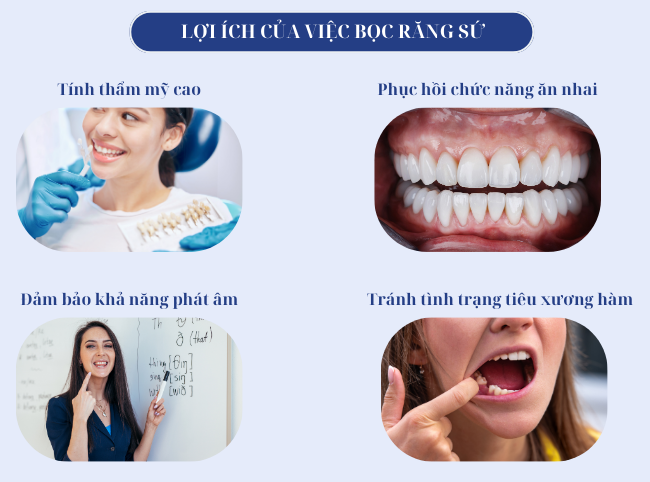
Restores chewing function effectively: High-quality crowns, especially full-ceramic ones, possess superior strength (360–900 MPa), far exceeding that of natural teeth (80–120 MPa). This allows efficient chewing and durability under high pressure.
Supports proper pronunciation: Missing teeth or poorly fitting dentures can affect speech clarity. Crowns not only improve voice quality but also prevent bone loss and bite issues, helping you feel confident when speaking.
Prevents jawbone loss: A porcelain crown not only restores tooth shape but also acts as a protective barrier, blocking bacteria, reducing cavities, and limiting jawbone resorption.
Ideal for severe tooth damage: If you have serious oral issues due to trauma, decay, or antibiotic staining that make you insecure about your smile, porcelain crowns offer a comprehensive solution. They restore both aesthetics and chewing function similar to natural teeth.
Although porcelain crowns offer many advantages, there are some risks. If the tooth is over-prepared and encroaches on the pulp, it may lead to prolonged sensitivity or pain and damage the natural tooth. Poor-quality crowns may also cause problems like wear on opposing teeth or gum irritation.
Therefore, it’s essential to research the dental clinic, the dentist’s expertise, and equipment carefully before proceeding. Reputable clinics use certified porcelain materials with high durability, safety, and natural aesthetics.
How long do porcelain crowns last?
The lifespan of a porcelain crown depends on various factors and is not permanent. However, with proper care and oral hygiene, crowns can last up to 20 years, according to statistical reports.
On the other hand, some cases may encounter complications shortly after the procedure. Therefore, there is no exact number for how long a crown will last, as it varies from person to person.
Common types of porcelain crowns today
Today, the market offers a variety of porcelain crown options, each with its own pros and cons. Below are some of the most popular types:
Metal-ceramic crowns
These crowns consist of a metal alloy core (Ni-Cr or Co-Cr) covered with a white porcelain outer layer. As the earliest type on the market, they are cost-effective and suitable for patients with limited budgets. Variants include standard metal-ceramic crowns, precious metal crowns, and titanium crowns.
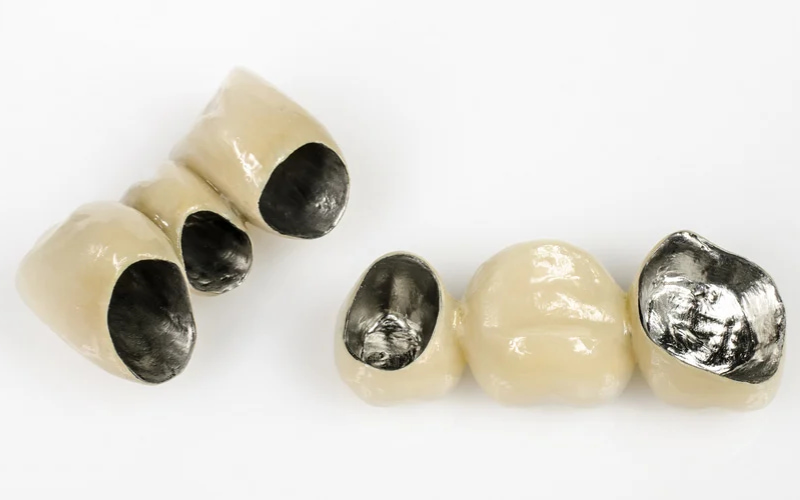
However, metal-ceramic crowns are prone to oxidation. The metal core can react with acids in the mouth over time, causing discoloration or dark gum lines. When exposed to light, the metal can also become visible, reducing aesthetic appeal. The average lifespan is about 5–7 years.
All-ceramic crowns
Also known as full-ceramic crowns, these are made entirely of porcelain with no metal components. This makes them non-irritating and highly natural in both shape and color. Common materials include Cercon HT, Zirconia, Zolid, and Nacera.
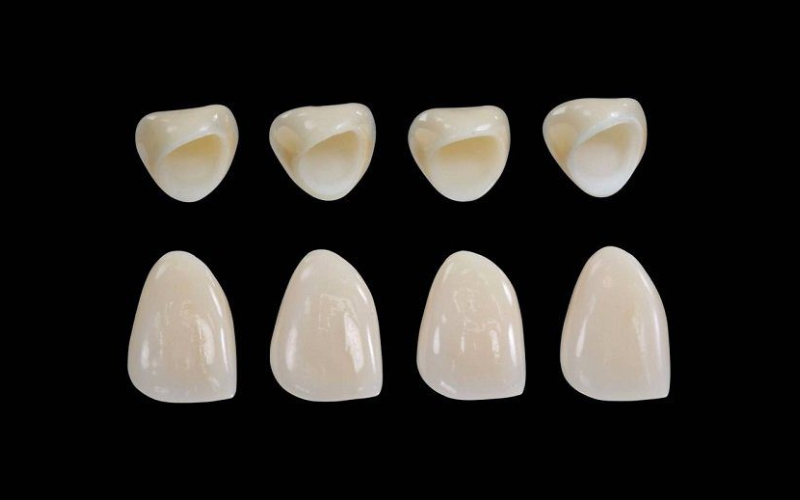
These crowns offer excellent strength (800–1600 MPa). With proper care, they can last up to 20 years. Compared to metal-ceramic crowns, they provide superior durability and aesthetics.
Emax crowns
Key advantages:
- Outstanding aesthetics: Made from lithium disilicate blocks, Emax crowns offer translucency and color similar to natural teeth.
- Good strength and durability: While not the hardest material, Emax still provides reliable chewing support for single-tooth restorations or small anterior bridges.
- Biocompatibility: Emax porcelain is highly biocompatible, causing no gum irritation or dark margins over time.
- Minimal tooth reduction: Compared to traditional metal-based crowns, Emax typically requires less enamel removal, preserving more natural tooth structure.
Considerations:
- High cost: Emax is more expensive than metal-ceramic or titanium crowns due to advanced materials and fabrication techniques.
- Not ideal for high-load areas: In cases requiring long-span bridges or molar restoration under heavy pressure, Emax may not be the best option compared to Zirconia.
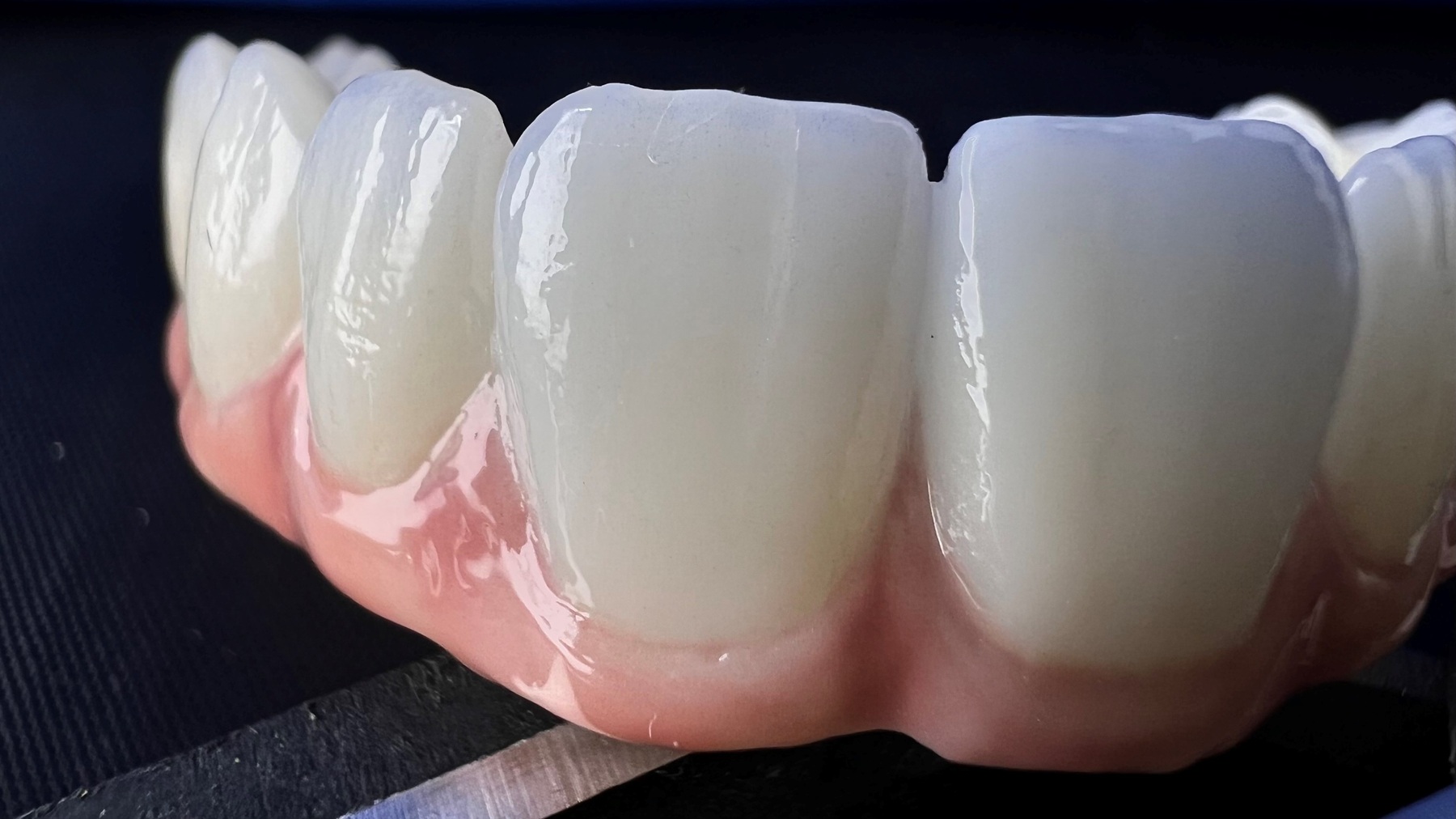
Zirconia crowns
Key advantages:
- Exceptional strength and durability: Known as the “white diamond” of dentistry, Zirconia offers superior hardness and is ideal for high-pressure areas like molars, long bridges, or implants.
- Good aesthetics: Though not as translucent as Emax, Zirconia has improved over time in shade and clarity when crafted by skilled technicians.
- Biocompatibility: Like Emax, Zirconia is safe for gums and causes no adverse reactions.
- Stain-resistant and wear-resistant: Zirconia resists discoloration and abrasion over time, maintaining long-term beauty.
Considerations:
- Highest cost: Among all porcelain types, Zirconia crowns are the most expensive due to premium materials and complex manufacturing.
- Less translucent than Emax: For highly aesthetic areas like front teeth, Emax may be preferable in terms of natural shine.
- May require more tooth reduction: Depending on the case, more enamel may need to be removed for proper Zirconia placement.
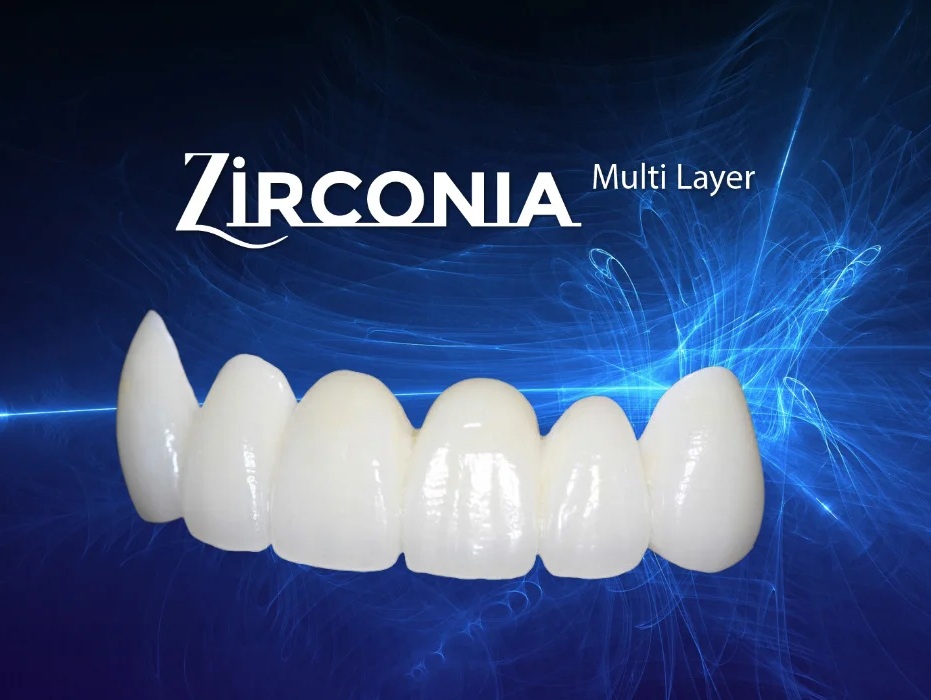
Titanium crowns
Key advantages:
- Affordable price: Titanium crowns are more budget-friendly than Emax or Zirconia, making them accessible to more patients.
- Good strength and durability: The titanium alloy inner core provides sufficient durability for everyday chewing.
- Biocompatibility: Titanium is well-tolerated by the body and gums.
Considerations:
- Lower aesthetics: Over time, the metal core may become visible near the gum line, especially in the front teeth.
- Limited translucency: Titanium crowns tend to appear more opaque compared to natural teeth or full-ceramic crowns.
- Possible allergic reactions: Though rare, some individuals may experience metal sensitivity.
- Shorter lifespan than all-ceramic: Due to metal oxidation over time, titanium crowns generally don’t last as long as Emax or Zirconia.
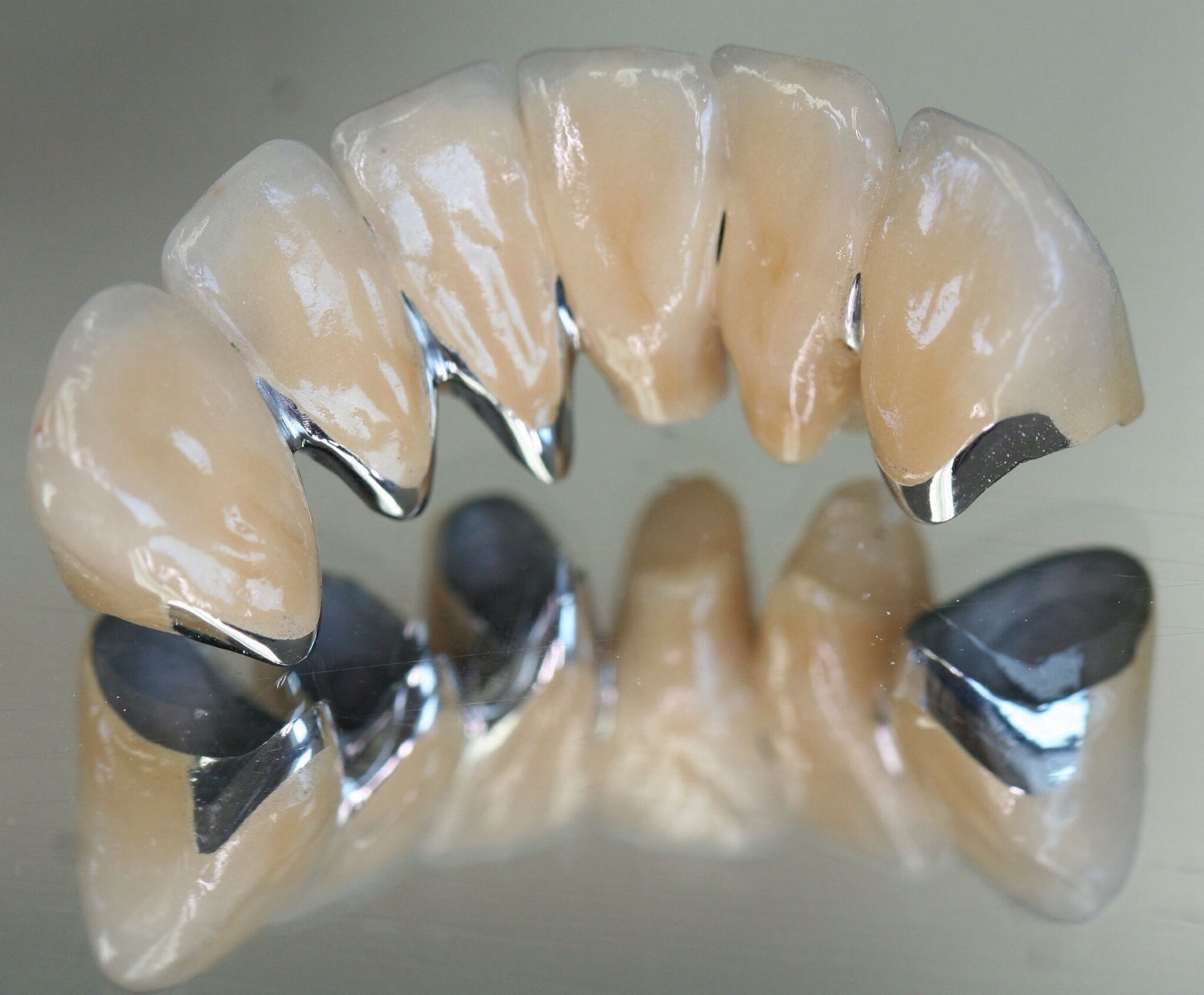
Ways to extend the lifespan of porcelain crowns
The durability of porcelain crowns largely depends on how well you follow the practices below to prolong their lifespan:
Choose high-quality porcelain materials
Material plays a crucial role in determining the longevity of crowns. For issues such as tooth decay or fractures, full-ceramic crowns are optimal thanks to their strength, long lifespan (up to 20 years), and sustained aesthetics.
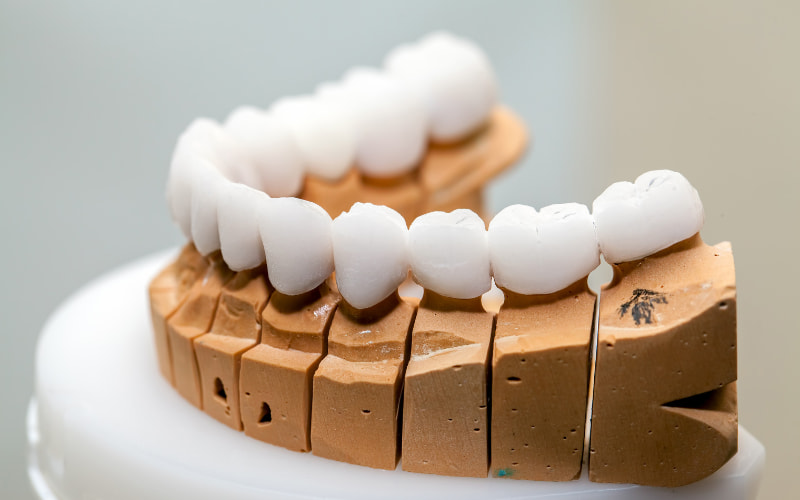
Choose a skilled dentist
The dentist’s expertise significantly affects crown longevity. An experienced dentist will precisely grind the tooth without invading the pulp or causing gaps at the margin, helping the crown last longer.
Treat oral conditions before crowning
Before proceeding, it’s essential to treat any oral diseases such as gingivitis, periodontitis, or pulpitis. A healthy foundation ensures the crown fits securely and functions effectively over time.
Maintain proper oral hygiene
To keep your crowns durable and avoid complications:
- Limit chewy or hard foods; consume calcium- and vitamin-rich items (vegetables, eggs, fish, dairy, etc.).
- Avoid teeth grinding, jaw clenching, or biting fingernails.
- Attend follow-up visits to check your crowns and detect issues early.
- Have tartar removed every 6 months, brush teeth twice daily, and use floss and mouthwash regularly.
The durability of porcelain crowns depends on a combination of factors: the crown material, the condition of the original tooth, the dentist’s skills, and your daily care habits. To maximize lifespan, follow your dentist’s guidance, attend scheduled check-ups, and report any unusual symptoms promptly.
What is the procedure for getting porcelain crowns?
Porcelain crowning is a complex cosmetic procedure that requires meticulous execution and high technical skill. If the preparatory steps are not performed carefully, the final outcome may be compromised.
The crown procedure typically includes the following steps:
Step 1: Examination (X-ray if needed) and treatment planning
First, the patient undergoes a general oral exam, and an X-ray if necessary, to check for tooth decay or pulp inflammation. Based on the results, the dentist will diagnose and recommend the most suitable crown type based on dental condition and budget.
Step 2: Oral cleaning and temporary impressions
Once the crown type is selected, the dentist performs thorough oral cleaning, including tartar removal and treating any gum inflammation. Then, a temporary impression is taken to prepare for crown fabrication.
Step 3: Anesthesia, tooth reduction, final impressions, and temporary crown
To ensure safety, the patient’s vital signs (blood pressure, heart rate) are checked. Then, local anesthesia is administered to the treatment area. If the tooth is non-vital (previously had a root canal), anesthesia may not be necessary.
Next, the tooth is trimmed into a post shape for crown placement. A precise impression is taken for lab fabrication, and the dentist selects the crown shade. Patients may also discuss their preferences regarding crown color and shape.
Once the data is collected, it is sent to the lab for crown production. In the meantime, a temporary crown (usually made of hard plastic) is placed to protect the prepared tooth and maintain aesthetics.
Step 4: Try-in and temporary cementation
The patient returns to test the crown’s fit, shape, and shade. The dentist may adjust the positioning for optimal bite comfort.
After testing, the crown is temporarily cemented to allow the patient time to assess comfort and function. If there are any issues, the patient should notify the dentist for timely adjustments.
Step 5: Permanent cementation and follow-up
Once fully satisfied, the permanent crown is cemented to complete the procedure. The dentist provides detailed instructions for care and oral hygiene, and schedules routine check-ups every 6 months.
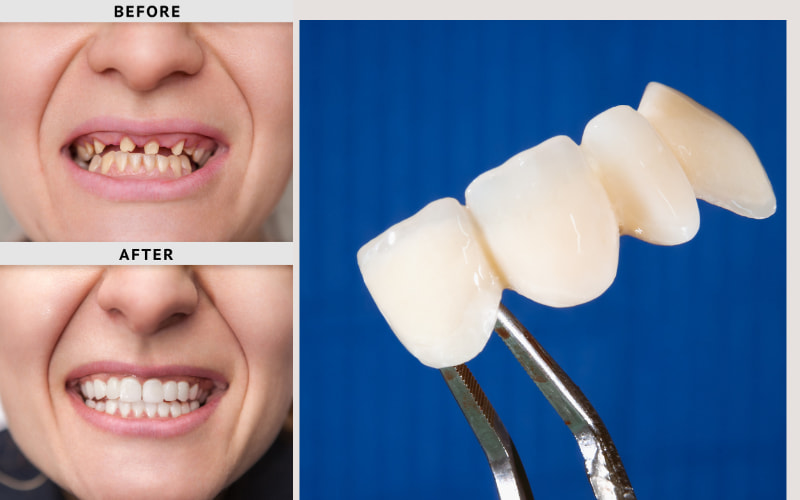
How much does a porcelain crown cost? Factors that affect pricing
Porcelain crowns are a popular cosmetic and functional dental solution that significantly enhance one’s smile and oral health. However, costs can vary greatly depending on several factors.
Factors that influence the cost of porcelain crowns:
- Type of crown:
- Metal-ceramic crowns: Lower cost, but may cause gum darkening over time.
- All-ceramic crowns (Cercon, Emax, Zirconia): High aesthetic value and durability, but more expensive.
- Titanium crowns: Mid-range pricing.
- Number of crowns needed: The more teeth that require restoration, the higher the total cost.
- Oral health condition: If prior treatment is required for cavities or gum disease, it will increase the overall cost.
- Skill of the dentist and clinic reputation: Experienced dentists and reputable clinics may charge more, but offer better outcomes and safety.
- Technology and equipment: Clinics with advanced technology may cost more but deliver more precise and aesthetic results.
- Crown material and origin: Crowns from well-known brands and made from high-quality materials are generally more expensive.
Reference pricing table at Amanda Dental Clinic:
Below is a reference price list for popular porcelain crown types:
| AESTHETIC PORCELAIN CROWNS | ||
| Service | Unit | Price (VND) |
| Titanium Ceramco3 porcelain crown (USA) | 01 Tooth | 2,000,000 |
| Katana all-ceramic crown (Japan) | 01 Tooth | 3,500,000 |
| Ziconia all-ceramic crown (Germany) | 01 Tooth | 3,500,000 |
| Venus all-ceramic crown | 01 Tooth | 4,500,000 |
| Roland crown (Germany) | 01 Tooth | 4,500,000 |
| Ceramil all-ceramic crown (Germany) | 01 Tooth | 5,500,000 |
| Emax all-ceramic crown (Germany) | 01 Tooth | 6,000,000 |
| Dmax all-ceramic crown (Germany) | 01 Tooth | 6,500,000 |
| Ceramil Zolid all-ceramic crown (Germany) | 01 Tooth | 6,500,000 |
| Nacera all-ceramic crown (Germany) | 01 Tooth | 8,000,000 |
| 3M Lava all-ceramic crown (USA) | 01 Tooth | 9,000,000 |
| HT Smile all-ceramic crown (USA) | 01 Tooth | 10,000,000 |
| Orodent White Matt all-ceramic crown (Italy) | 01 Tooth | 12,000,000 |
| Orodent Gold all-ceramic crown (Italy) | 01 Tooth | 15,000,000 |
| Orodent High Translucent all-ceramic crown (Italy) | 01 Tooth | 18,000,000 |
| Orodent Bleach all-ceramic crown (Italy) | 01 Tooth | 20,000,000 |
| Re-cement porcelain crown | 01 Tooth | 350,000 |
| Re-bond veneer | 01 Tooth | 500,000 |
Common methods of porcelain crowning today
Currently, there are several crown techniques available depending on the patient’s oral condition and aesthetic needs. Here are some common methods:
Dental crown (full coverage)
This method is typically used when a tooth is severely damaged, too broken to fill, or has undergone root canal treatment and is at risk of fracturing. The dentist reduces the tooth and places a full porcelain crown over it, restoring both shape and function while protecting the remaining tooth structure.
Dental bridge
A porcelain bridge is often recommended for patients missing one or more teeth but still having healthy adjacent teeth. This is an effective restoration option for those who do not want removable dentures or cannot afford implants. The dentist grinds down the neighboring teeth (abutments) and places a connected set of crowns (bridge) over them to fill the gap.
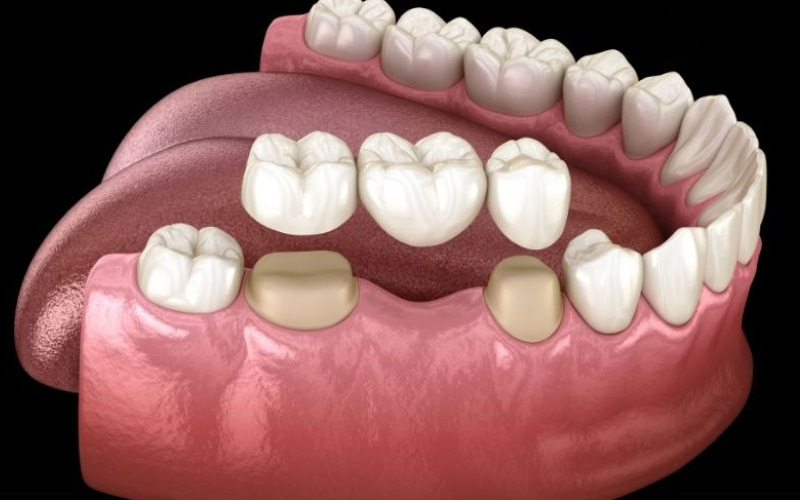
Amanda Dental Clinic – A reputable, high-quality porcelain crown provider
Amanda Dental Clinic is a dental system built to European standards, equipped with advanced technologies and a team of highly experienced doctors specializing in porcelain restorations.
- Professional dental team: Amanda Dental Clinic has a team of well-trained, highly experienced dentists with strong expertise in aesthetic porcelain restorations.
- Modern technology: The clinic applies cutting-edge dental technologies, including CAD/CAM systems, to ensure fast, precise, and effective crown procedures.
- High-quality porcelain materials: All crowns used have clear origins and are made from certified, aesthetic, and safe materials.
- Dedicated customer service: The support team prioritizes customer satisfaction and provides attentive, thoughtful care throughout the treatment process.
- In-house dental lab: Amanda Dental Clinic operates its own dental lab for crown fabrication, ensuring optimal quality control.
- Reasonable costs: Crown services at Amanda Dental Clinic are priced reasonably and suitable for a wide range of clients.
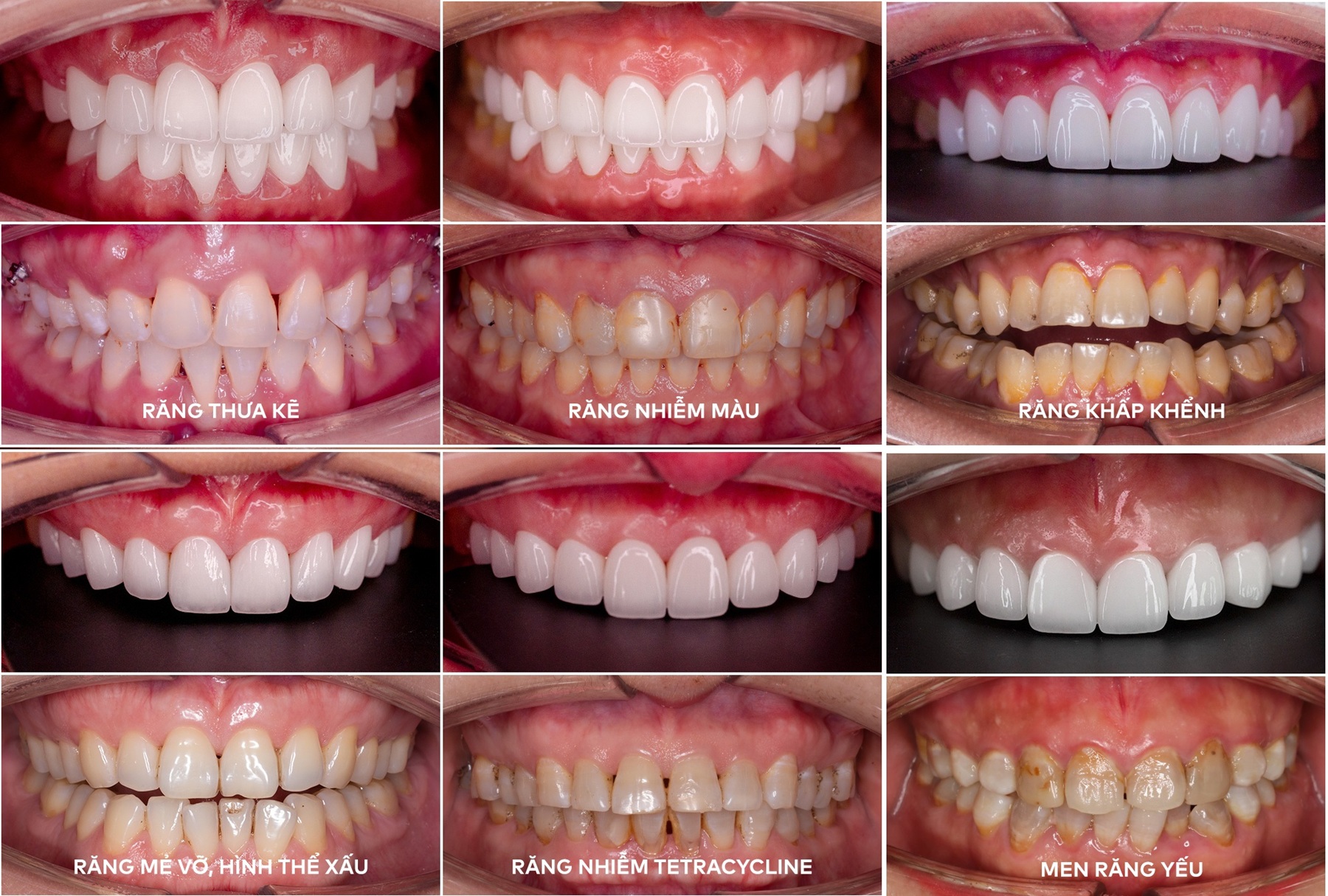
How to care for your crowns effectively at home
Porcelain crowns are an optimal cosmetic dental solution that bring a bright, even smile. However, to maintain both their beauty and durability, proper care is essential.
Maintain proper oral hygiene
- Brush gently: Use a soft-bristle toothbrush and non-abrasive toothpaste to avoid scratching the porcelain surface. Brush at least twice a day, especially after meals.
- Use dental floss: Clean between teeth daily to remove plaque and food debris, preventing gum disease and other oral issues.
- Mouthwash: Use antibacterial mouthwash to eliminate bacteria and keep your breath fresh.
- Water flosser: This is an excellent tool for deep cleaning between teeth and along the gumline, especially useful for patients with crowns.
Maintain a proper diet
- Avoid hard or chewy foods: Refrain from biting hard items like ice, bones, or hard candy to prevent cracking your crowns.
- Avoid extreme temperatures: Excessively hot or cold foods may cause sensitivity and affect the crown’s longevity.
- Limit staining foods and drinks: Dark-colored items like coffee, tea, and red wine may stain porcelain surfaces over time.
- Consume calcium- and vitamin-rich foods: Maintain a balanced diet to support strong teeth and healthy gums.
Attend regular dental check-ups
- Visit the dentist every 6 months: Regular cleanings and exams help detect and address issues early.
- Check your bite: Ensure your bite is balanced and not putting undue pressure on the crowns.
- Polish the crowns: The dentist may polish the porcelain to remove stains and plaque buildup, keeping them shiny.
The longevity of porcelain crowns depends on the type of crown chosen, the condition of the patient’s teeth, the dentist’s expertise, and oral care habits. To maximize crown lifespan, always follow your dentist’s instructions, attend regular check-ups, and report any unusual symptoms promptly.




